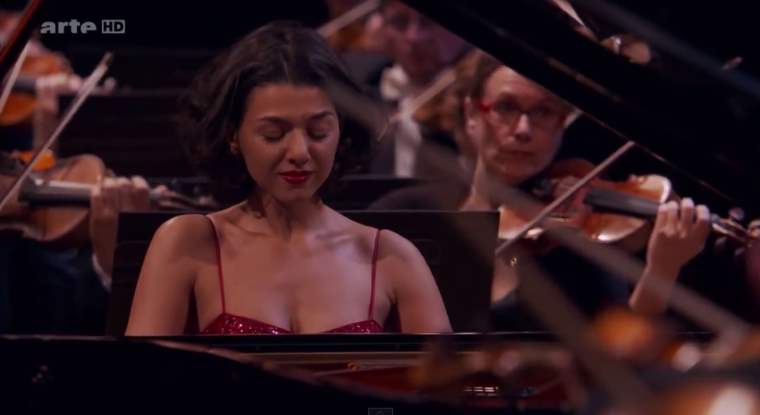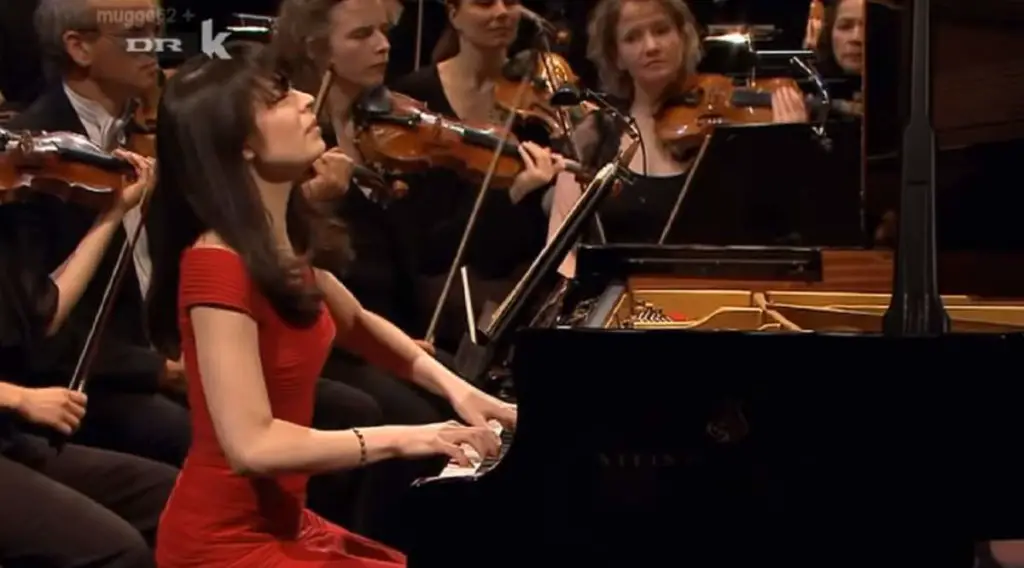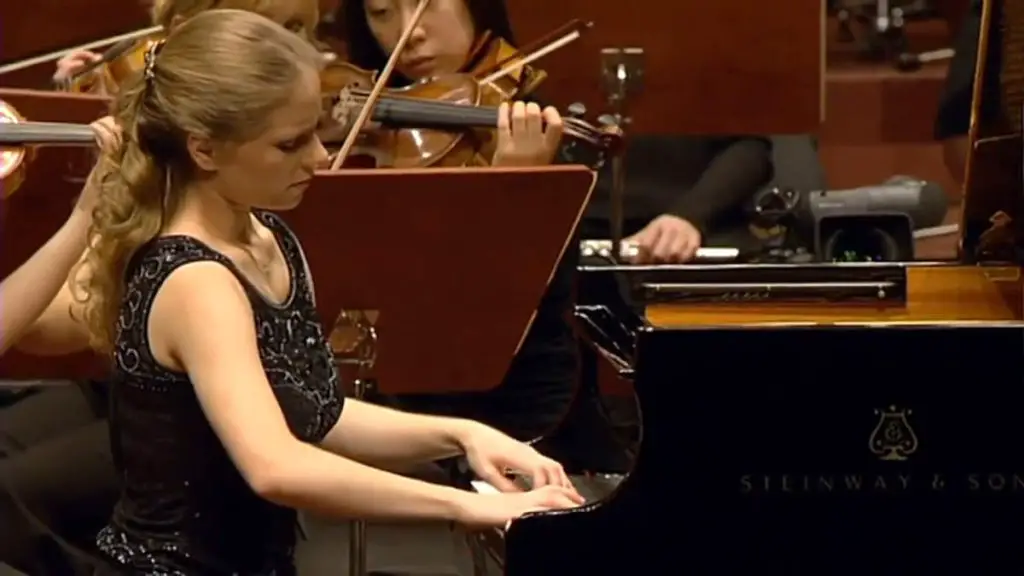Accompanied by the London Symphony Orchestra, Polish American classical pianist Arthur Rubinstein plays the Piano Concerto in A minor, Op. 16, by Edvard Grieg. Conductor: André Previn. Recorded in April 1975 at London’s Fairfield Hall.
London Symphony Orchestra
André Previn, conductor
Edvard Grieg’s Piano Concerto
Composed in 1868, it was the only concerto that the Norwegian composer completed. It is one of Grieg’s most popular works and among the most popular of all piano concerti.
The concerto is in three movements. With the starting times in the video:
- 00:00 Allegro molto moderato (A minor). The first movement is in sonata form and is noted for the timpani roll in its first bar that leads to a dramatic piano flourish, which leads to the main theme. Then the key changes to C major, for the secondary theme. Later, the secondary theme appears again in the recapitulation, but this time in the key of A major. The movement finishes with a virtuosic cadenza and a flourish similar to that at the start of the movement.
- 14:27 Adagio (D-flat major). The second movement is a lyrical movement in D-flat major, which leads directly into the third movement. The movement is in ternary form (A-B-A). The B section is in D♭ major and E major, then returns to D-flat major for the reprise of the piano.
- 21:33 Allegro moderato molto e marcato – Quasi presto – Andante maestoso (A minor – F major – A minor – A major). The finale of Edvard Grieg’s piano concerto opens in A minor 2/4 time with an energetic theme (Theme 1), which is influenced by the Norwegian Halling dance (a folk dance traditionally performed in rural Norway). It is followed by a lyrical theme in F major (Theme 2). The movement returns to Theme 1. Following this recapitulation is the 3/4 A major Quasi presto section, which consists of a variation of Theme 1. The movement concludes with the Andante maestoso in A major, which consists of a dramatic rendition of Theme 2 (as opposed to the lyrical fashion with which Theme 2 is introduced).
At 88, Artur Rubinstein showed no trace of losing that quality of joie de vivre (a French phrase often used in English to express a cheerful enjoyment of life; an exultation of spirit) that had so fascinated audiences for almost three-quarters of a century.
The true Rubinstein sound, full and sonorous at every pitch, was always one of the distinctive marks of his playing ever since he began appearing in public. Rubinstein’s performance of Grieg’s ever-popular piano concerto, accompanied by the London Symphony Orchestra under André Previn, is a perfect testimony of his notion of a “singing tone.”
With playing that is by turns vital and poetic, extroverted and reflective, rhapsodic and poised, this performance, filmed in April 1975 at London’s Fairfield Hall, is Rubinstein at his warm-hearted, lyrical best.
Sources
- Piano Concerto (Grieg) on Wikipedia


